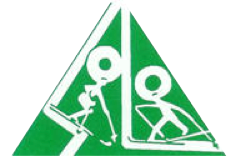Student Equipment
SOLO supplies all the skiing equipment necessary to participate in either program, including downhill or cross-country skis, boots, poles, and snowshoes. In addition, we provide specialized training equipment for teaching purposes, especially in downhill skiing. Some of the adaptive equipment used in teaching include 'ski bras', which hold the student’s ski tips together as a volunteer controls the skier from behind (possibly using tethers,) and outriggers, which are used instead of poles by skiers with certain physical disabilities.
Students are responsible for providing clothing that is appropriate for the activity and any safety equipment they deem necessary. Volunteers with experience as ski instructors or Ski Patrol members will have some tips on clothing at the orientation meeting.
Clothing
While there is plenty of clothing designed specifically for skiing, don't feel like you have to spend a lot of money at a fancy ski shop or sporting goods store. You may be able to use much of the clothing you already have. At the same time, investing in a good pair of ski socks or gloves can make your experience more enjoyable.
For both downhill and cross-country skiing, it is especially important to dress in layers. Layering will allow you to add or remove clothing to adjust to the conditions to avoid overheating or being too cold. A long sleeve shirt, sweatshirt or fleece pullover, and a lighter outer jacket is preferable to only an undershirt and big heavy parka. Again, two or three layers of thinner pants would be preferable to one pair of thick heavy snow pants. Inner layers should be made of materials that breathe and wick moisture away from the body, such as wool blends or a product like Under Armour. Jeans and other cotton clothing are not recommended. Outer layers should be windproof and waterproof.
A single pair of skiing or hiking socks that stay up over your calves will help keep your feet comfortable without bunching up. Protect your head and ears with your favorite hat, headband, or earmuffs. Avoid loose clothing and articles like scarves that can get caught up in equipment and create a dangerous situation. Mittens are usually warmer than gloves, but provide less dexterity. Sunglasses and sunscreen may also be a good idea for the cross-country program.
Helmets
Move United, who provides insurance for our program, requires all participants in the alpine program to wear a ski helmet for downhill skiing. Students wishing to purchase a helmet for downhill skiing can do so through SOLO. SOLO is working with hospitals in Kalamazoo. In the past, they’ve sold helmets for $25. To order one, contact SOLO board member Joe Dits at joedits@hotmail.com. We’ll deliver helmets on the first Monday ski session. If you want to shop on your own, another source of helmets is the Play It Again Sports store at 3527 S. Main St., Elkhart, which in the past has had used ski helmets from about $10 to $30 and new helmets starting at $55.
